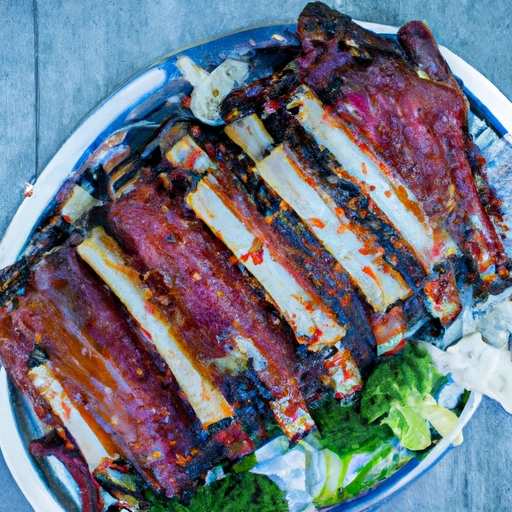Pork Spare Ribs
Description

Pork spare ribs are a popular cut of meat obtained from the belly side of a pig's rib cage, just above the belly. They are known for their full flavor and tenderness when cooked properly. Pork spare ribs typically include a layer of meat covering the bone and are more elongated than baby back ribs. Considered a staple in various cuisines, they can be prepared using an array of cooking methods, such as grilling, smoking, baking, or slow-cooking.
Common uses
Pork spare ribs are a versatile ingredient used in a variety of dishes. They are commonly served as a main dish, known for their succulent meat and rich, savory flavor that pairs well with a multitude of seasonings and sauces.
Nutritional value
Calories
A typical serving of pork spare ribs (3.5 oz or about 100 grams) contains approximately 277 kcal (kilocalories).
Protein
Pork spare ribs offer about 24 grams of protein per 100 grams, making them a substantial source of this macronutrient.
Fat
The fat content in pork spare ribs can vary but is approximately 20 grams per 100 grams. This includes a mix of saturated and unsaturated fats.
Carbohydrates
Pork spare ribs contain negligible amounts of carbohydrates unless they are prepared with sauces or marinades containing sugars or other carbs.
Vitamins
Pork spare ribs provide B vitamins, particularly vitamin B6 and niacin, which are important for energy metabolism and overall health.
Minerals
Pork spare ribs are a good source of minerals such as zinc and phosphorus, which are essential for maintaining healthy bones and immune function.
Health benefits
The protein content in pork spare ribs supports muscle building and repair, while B vitamins help maintain various body functions. The minerals found in pork spare ribs, like zinc and phosphorus, are crucial for bone health and metabolic processes.
Potential risks
Consuming pork spare ribs in excess can lead to increased intake of saturated fat and cholesterol, potentially impacting heart health. Additionally, high-temperature cooking methods such as grilling or barbecuing can produce harmful compounds.
Common recipes
Pork spare ribs are featured in recipes like barbecue ribs, braised ribs, and spare ribs with sticky glazes. They're a highlight in cuisines from American BBQ to Chinese dim sum.
Cooking methods
Popular methods include smoking, grilling, baking, and slow-cooking, each imparting distinct flavors and textures to the ribs.
Pairing with other ingredients
Pork spare ribs pair well with flavors ranging from sweet and tangy barbecue sauces to spicy dry rubs. They complement side dishes like coleslaw, cornbread, and roasted vegetables.
Summary
Pork spare ribs are a prized culinary ingredient, beloved for their rich taste and versatility. With roots in various global food traditions, they offer robust flavor, protein, and essential nutrients. While delicious, moderation is key due to their high-fat content and potential health risks when consumed in excess or cooked improperly.